For decades, Poultry farming of country chicken farming has been practiced in India. Generally, in backyard poultry, local, indigenous birds are reared, and the farm should be located far from any other commercial poultry operation to prevent diseases.
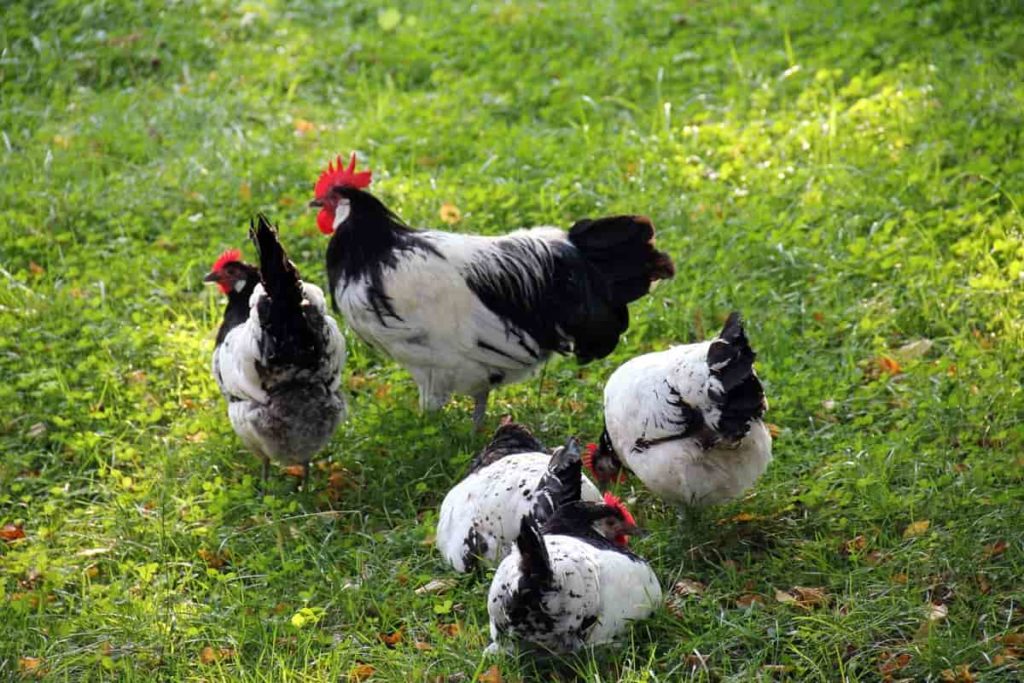
Common country chicken diseases
What disease kills the most chickens?
Fowl Cholera
Fowl cholera is a most contagious bacterial disease in domestic and wild birds. It is also called avian cholera, avian pasteurellosis, and avian hemorrhagic septicemia. Fowl Cholera is a chronic disease occurred by Pasteurella Multocida, a gram-negative, non-spore-forming, rod-shaped bacteria. This disease will affect the chickens’ joints, wattles, sinuses, and other tissues.
Acutely, it causes high mortality. Chronically, it causes lameness, swollen wattles in chickens, and pneumonia in turkeys, but it can also be asymptomatic. It is most commonly found in older chickens; Fowl Cholera affects more cocks than hens. Common symptoms include less appetite, diarrhea with a greenish color, ruffled feathers, swollen purple wattle, swollen comb, swollen joints, lameness, and oral, nasal, and ocular discharge. Sometimes, it leads to sudden death.
Coccidiosis
Coccidiosis is a parasitic disease occurred by Coccidian protozoa parasites from the genus Eimeria that live in and damage a specific gut region in chickens. These parasites are host-specific that occupy a specific segment of the intestinal tract. Coccidiosis may be one of the common diseases affecting small flocks worldwide, causing a loss in performance and even mortality. This disease is transmitted via the droppings of infected birds. This disease will start spreading when chickens consume an oocyst broken down by chemicals in the gut, releasing an infective sporocyst.
This oocyst begins the life cycle that destroys intestinal epithelial cells. This disease will damage the gut walls, and it causes loss of appetite, diarrhea, ruffled feathers, weight loss, and inability to absorb nutrients. Affected chickens also exhibit Symptoms of coccidiosis, which include ruffled feathers, depression, huddling, unwillingness to eat, weight loss, paleness, and watery or bloody diarrhea. All birds are at risk, but growing birds and young adults ages 3 to 5 weeks old seem most susceptible.
Avian Influenza
Avian influenza is a disease caused by Orthomyxoviruses. They are generally found and spread by wild and domesticated poultry. The most virulent viruses cause highly pathogenic avian influenza (HPAI), a systemic infection in which death rates for some susceptible species are high. Avian influenza is a lethal infection in domestic birds like chickens and turkeys. It has a variable clinical effect and may or may not cause clinical signs and death in domestic waterfowl and wild birds.
In case you missed it: Common Rabbit Diseases, Symptoms, Treatment: Check How this Guide Helps Rabbit Farmers
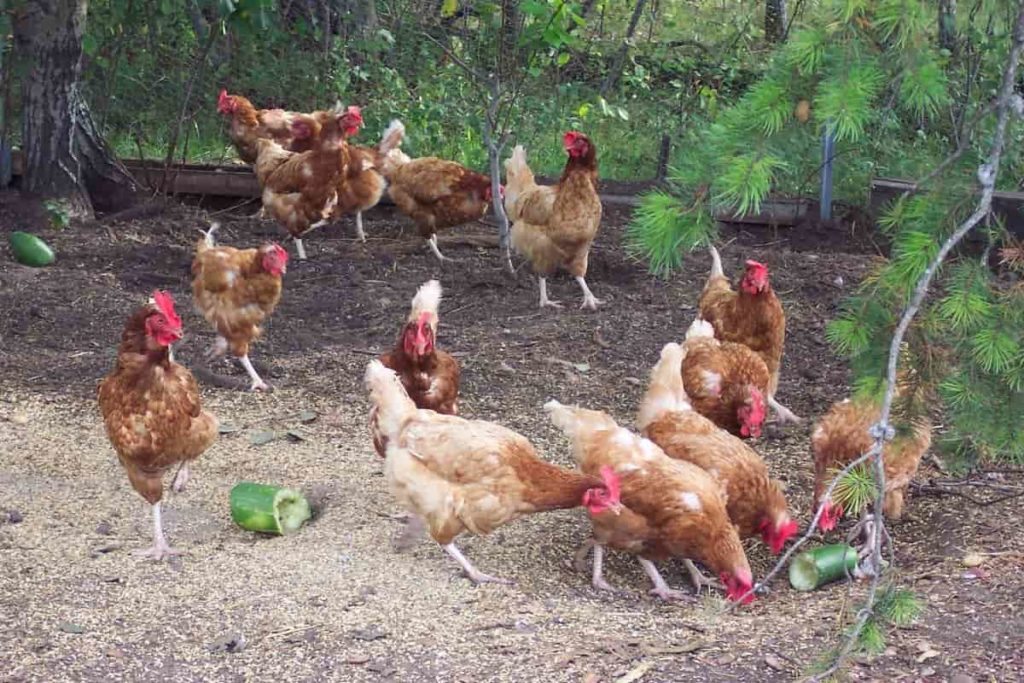
Nasal discharge, edema in the comb, diarrhea, purple discoloration, coughing and sneezing, swelling, ruffled feathers, and more are some symptoms of this disease. In chickens, HPAI signs often include respiratory and digestive symptoms followed by rapid death. Chickens will swell around the head, neck, and eyes. The heads and legs will have purple discoloration.
Fowl Pox
Fowlpox is a chronic viral infection commonly seen in chickens and turkeys characterized by thriving skin lesions that later transform into thick scabs in the upper GI and respiratory tracts. Virulent strains will cause lesions in the internal organs. This disease is also called Avian Pox. Fowl Pox is highly contagious, and chickens with Avian Pox can experience two different types of the condition:
Dry pox
Dry Fowl Pox is a viral infection. It affects a chicken’s skin in non-feathered areas, mainly the comb, wattles, face, and eyelids.
Wet pox
Wet Fowl Pox affects a bird’s upper respiratory system, eyes, mouth, and throat and can lead to death. Symptoms are characterized by distinctive scabs that look like scabs and are visible on the comb. In addition, chickens experienced stunted growth, and egg production decreased. Chickens with Fowl Pox will also exhibit signs like a drop in egg production, loss of appetite, weight loss, and tell-tale skin lesions or lesions inside the mouth and throat. Symptoms generally continue for several weeks in a bird and several months in a flock.
Newcastle disease
Newcastle disease is an infection of domestic chickens and other bird species caused by the Newcastle disease virus. It is a problem that presents primarily as an acute respiratory disease; depression, nervous manifestations, and diarrhea will be the predominant clinical form. Newcastle disease is a fatal viral disease. It spreads so rapidly that many birds die without showing any illness.
It’s one of the most contagious infections in the world for poultry, and it can infect and cause death also in vaccinated birds. An infected bird may exhibit some signs, including sneezing, gasping, nasal discharge, coughing, greenish, watery diarrhea, depression, muscular tremors, droopy wings, circling, and complete paralysis, partial to complete drop in egg production and thin-shelled eggs.
In case you missed it: Common Shrimp/Prawn Diseases, Symptoms, Treatment: Check How this Guide Helps Shrimp Farmers
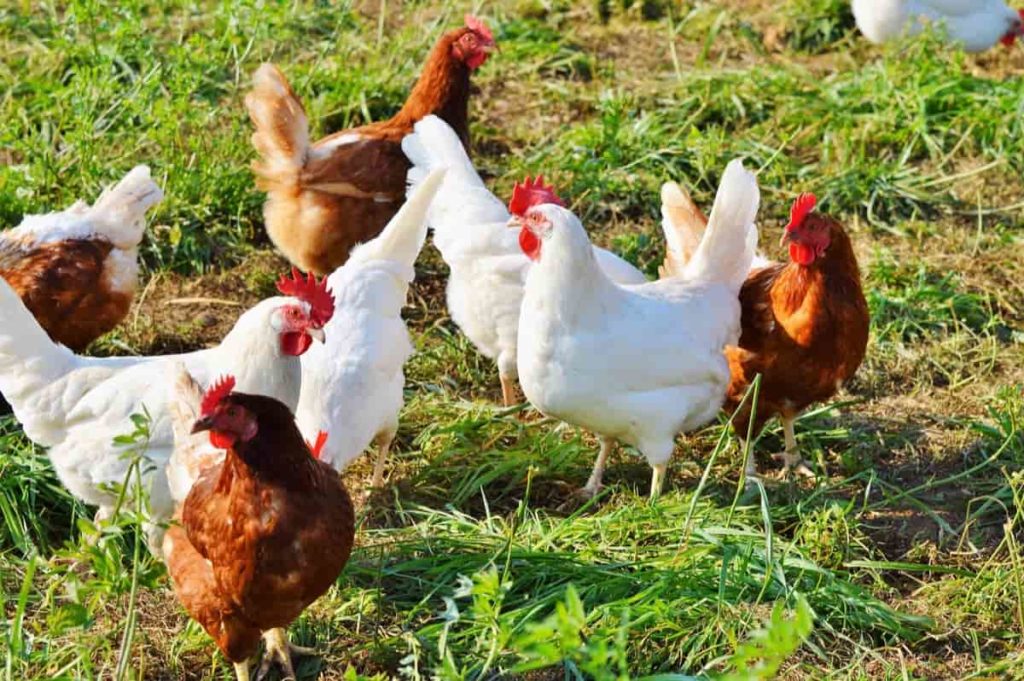
Salmonellosis
Salmonella is an enteric pathogen that can affect almost all animals, including humans. Gram-negative bacteria from the genus Salmonella cause salmonellosis in poultry. It is a bacterial disease that causes septicemia and enteritis in chickens. Salmonellosis is not the most devastating poultry disease but one of the most difficult diseases to control. The main reason is the large variety of serotypes and the very complex epidemiology of this microorganism.
Affected chickens may show salmonellosis symptoms, including diarrhea, closed eyes, loss of appetite, thirst, ruffled feathers, and sadness. It is typical for chickens and ducks to carry Salmonella. These bacteria live naturally in the intestines of poultry and can be passed in their droppings. Even organically fed poultry will become infected with Salmonella.
Infectious bronchitis
Infectious bronchitis is chickens’ acute, highly contagious, viral respiratory disease. It is characterized by tracheal rales, coughing, and sneezing. In addition, it will affect the kidneys, and laying flocks decreases egg production and impairs the quality of eggs produced. Infectious bronchitis in chickens exhibits symptoms that include gasping, sneezing, reduction in weight due to loss of appetite, cough, which can sound like a yelp, ruffled feathers, tracheal rales, conjunctivitis, shortness of breath, and breathing noises – particularly at night.
Infectious Coryza
Infectious Coryza is a respiratory infection of chickens that leads to decreased activity, nasal discharge, sneezing, and facial swelling. The disease affects only chickens but also reports in quail and pheasants likely describe a similar disease caused by a different bacterium. Affected birds catch this infection when their heads become swollen. The eyes will swell shut, and the combs will also swell.
Then the discharge will start to flow from the eyes and nose. The chickens will stop laying and will have moisture under their wings. Prevention is the only method of control for infectious Coryza. Restrictions on In and out movements of animals as part of sound farm management and biosecurity practices are important disease prevention measures.
Marek disease
Marek’s disease is a very contagious viral disease in chickens. Marek’s disease is caused by an alpha herpes virus known as Marek’s disease virus or Gallid alphaherpesvirus. This disease is commonly seen in younger birds that are usually under the age of 20 weeks. Unfortunately, this disease is very easily infected in chickens. It is a super easy virus to transmit from bird to bird. They usually get the virus by breathing in pieces of shed skin and feathers from an infected baby chicken.
Thrush
Thrush is a fungal disease. This disease will occur if the chickens eat contaminated feed or other infected food. And they can contract the disease from contaminated water or surfaces. Candidiasis is a disease of the digestive tract of various avian species, including chickens, turkeys, and quail. It is caused by the fungus Candida albicans. It commonly develops after the use of various antimicrobials or when using unsanitary drinking facilities.
Heavy parasitism and malnutrition have also been implicated. A white oozy substance inside their crop can be seen on the chicken neck. Affected birds will have a larger than normal appetite, appear passive, and have a crusty vent area. And their feathers will look ruffled. There is no vaccine to treat this disease, but it can be treated by an antifungal medicine available at a local veterinarian.
Bumblefoot
Bumblefoot, also called Pododermatitis, is an inflammatory condition in the soft tissues of a chicken foot. The chicken ailment is diagnosed in five grades, ranging from a minimally noticeable change in skin to a noticeable limp and crippling deformity. A chicken accidentally cuts its foot on something, and this cut gets infected.
And also, the chicken’s foot will begin to swell. It can even swell up the leg. Bumblefoot is an infection caused by bacteria. It is usually the result of some injury to the foot, such as a cut, scratch, graze, puncture, or even a bruise, that then becomes infected. Because chickens are pretty hardy, the initial injury often isn’t noticed, and the exposed wound then contracts bumblefoot.
Omphalitis
This disease obviously will impact baby chickens. It usually appears in newly hatched baby chickens with an enlarged, inflamed, and blue-tinted midsection. The baby chickens will have an unpleasant smell and will appear to be drowsy. Naturally, the baby chickens will also be weak.
In case you missed it: Common Fish Diseases, Symptoms, and Treatment: Check How this Guide Helps Fish Farmers
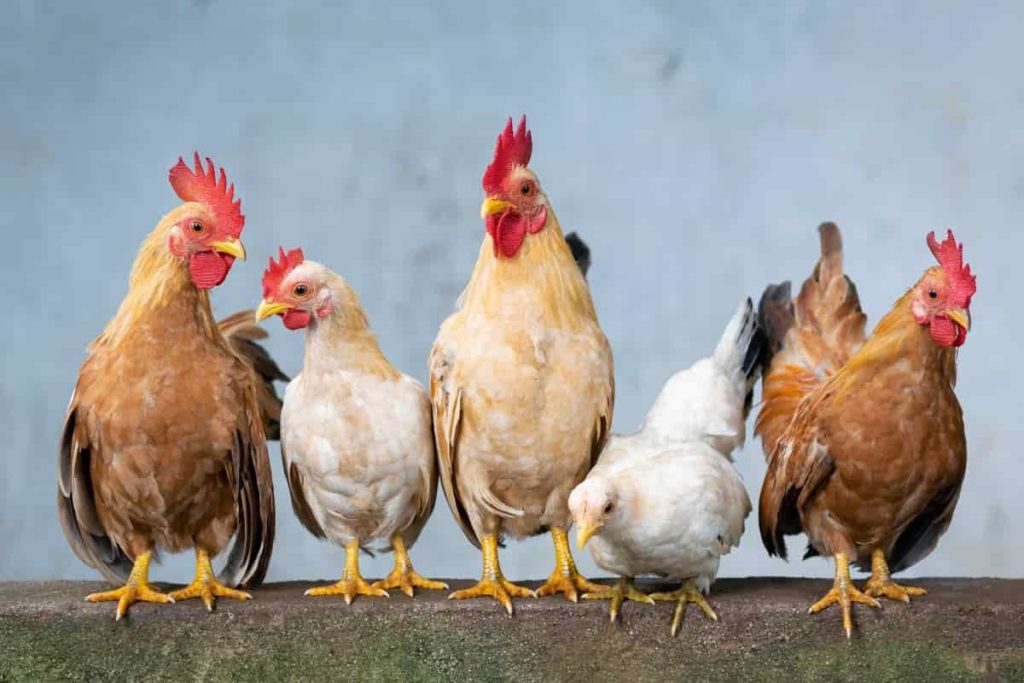
It is generally transmitted from chicken to chicken or from a dirty surface where an infected baby chickens is, and it is contracted from an unclean area where a baby chickens with a weak immune system contracts the bacteria. There is no vaccine for this disease. However, sometimes, antibiotics will work. Immediately separate healthy baby chickens from the sick ones to avoid further spreading and treat the diseased ones.
Pullorum
Disease caused by two poultry-adapted strains of Salmonella bacteria, Salmonella Pullorum. It usually only causes mortality in chickens up to 3 weeks of age. Sometimes, it can infect adult birds, typically brown-shell egg layers. It commonly affects chickens but infects turkeys, game birds, guinea fowls, sparrows, parrots, ring doves, ostriches, and peafowl. Pullorum disease is characterized by very high mortality in chickens and turkeys.
Affected birds are anorectic, weak, depressed, and have white fecal material pasted to the vent area. This disease impacts baby chickens and older birds differently. The baby chickens will show no activity, have a white paste all over their backsides, and show breathing difficulty. However, some will die with no signs at all.
What does coccidiosis look like in chickens?
The disease’s most common symptom is blood or mucus in chicken droppings. However, reddish chicken droppings are always not an indication of coccidiosis. Chicken droppings may also appear brownish red due to the shedding of cecal cells. The only method to know if the droppings indicate an infected bird is to have the droppings tested by a veterinarian.
Symptoms of coccidiosis include weight loss, paleness, ruffled feathers, depression, huddling, unwillingness to eat, and watery or bloody diarrhea. Other symptoms of this disease can include diarrhea, weakness, and listlessness, pale comb or skin, blood located at the vent site of the bird, decreased food or water consumption, ruffled feathers, weight loss, the decreased growth rate in young chickens, and failing to lay eggs or inconsistently laying eggs.
What causes infectious Coryza in chickens?
Infections Coryza is usually acute but a chronic, highly infectious disease of chickens, occasionally pheasants and guinea fowl. Infectious Coryza is characterized by catarrhal inflammation of the upper respiratory tract, especially nasal and sinus mucosae. Infectious Coryza, also known as a cold, is caused by the Haemophilus paragallinarum. This disease commonly affects chickens, but quail and pheasants may also be affected. This disease is primarily transmitted by direct bird-to-bird contact.
How do chickens get infectious Coryza?
Infectious Coryza disease can be spread via aerosols, ingested feed or water, and contaminated clothing and equipment. The most common symptoms of infectious Coryza are edema or swelling of the face and nasal and eye discharges. Coryza transmits by direct bird-to-bird contact, airborne infection by dust or respiratory-discharge droplets, and contamination of feed and water. However, it is not transmitted through the egg.
What causes weak legs in chickens?
Leg weakness will be caused by the deficiency of certain nutritional factors, Vitamin B-complex, minerals, etc. Diseases like Reovirus infections, viral arthritis, Marek’s, and coccidiosis may also cause leg weakness. Apart from all these, the Newcastle disease virus may also be responsible for this disorder.
What does fowl pox look like on chickens?
Fowlpox is a slow-spreading viral disease commonly seen in chickens and turkeys identified by proliferative lesions in the skin that become thick scabs and lesions in the upper gastrointestinal system and respiratory tracts. Virulent strains will cause lesions in the internal organs.
Diseased chickens exhibit Signs that include scabs or wart-like lesions on the comb, wattles, eyelids, face, and feet, eyelid swelling and eyes sealed shut or scabbed over, yellow canker lesions in the mouth, and weight loss, loss of appetite and reduced water consumption.
In case you missed it: Common Sheep Diseases, Symptoms, and Treatment: Check How this Guide Helps Sheep Farmers
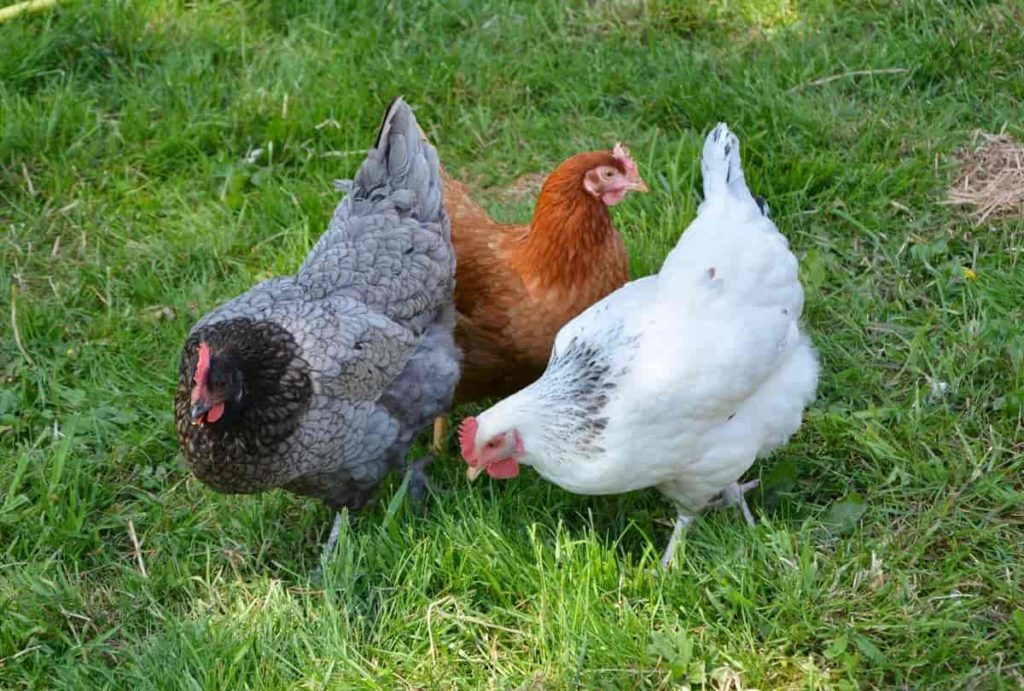
What are the signs and symptoms of Newcastle disease in chickens?
Newcastle disease only affects poultry like chickens particularly. It will cause illness and death in large numbers of birds quickly. Infected birds may show signs of coughing, gasping, nasal discharge, watery eyes, bright green diarrhoea, loss of appetite, and nervous signs such as paralysis and convulsions.
How is Newcastle disease transmitted?
Newcastle disease is spread directly by infected birds’ droppings or respiratory discharges. The virus can live for an extended period in the surroundings and can be spread by objects such as shoes, clothing, and equipment that have become contaminated by infected birds. Eggs laid by hens infected with Newcastle virus present a very low risk.
Infected chickens and other wild birds may be sources of this virus. Movement of infected birds and transfer of virus, especially in infective droppings, by the movement of people and contaminated equipment or litter are the main methods of virus spread between chicken to chicken.
What is salmonellosis disease in chicken?
Gram-negative bacteria from the genus Salmonella cause salmonellosis in poultry. Salmonella gallinarium and Salmonella pullorum are the most pathogenic serotypes in avian species leading to infection and can cause severe economic losses in the poultry industry. Backyard poultry, like chicken and ducks, can spread Salmonella bacteria even if they look healthy. These germs can easily transmit to anything in the areas where the poultry live and roam.
What does fowl cholera look like in chickens?
In acute fowl cholera, finding many dead birds without previous signs is usually the first indication of disease. Mortality often increases rapidly. In more protracted cases, depression, anorexia, mucoid discharge from the mouth, ruffled feathers, diarrhea, and increased respiratory rate are usually seen. Disease animals may also have signs that include sadness, loss of appetite, coughing, nasal, ocular, and oral discharge, swollen and cyanotic wattles, and face and sudden death.
How do chickens get infectious bronchitis?
Infectious bronchitis is chickens’ most contagious, acute infection that causes nasal discharge, coughing, and rales. In layers, it causes a more significant reduction in egg production and quality. Infected chickens shed this disease-causing virus in respiratory discharges and feces. It can be spread by aerosol, ingesting contaminated feed and water, and contact with contaminated equipment and clothing.
Where is Marek’s disease common?
Marek’s disease is most contagious and readily transmitted among chickens. The virus develops into an infective, enveloped form of the feather follicle, from which it is released into the environment. It may live for months in poultry house litter or dust. The virus is most infectious, and once introduced to a farm, it spreads rapidly to unvaccinated birds.
How do I know if chickens have Mareks?
The chickens are paralyzed by the tumors growing on their nerves. The skin form shows up as enlarged feather follicles and white bumps on the skin that turn into brown scabs later. Birds may show signs of depression, paralysis, less appetite, anemia, dehydration, and sometimes diarrhoea. Some birds die without exhibiting any clinical signs being noticed. Most birds that developed Marek’s disease led to death.
In case you missed it: Common Dairy Cattle Diseases, Symptoms, and Treatment: Check How this Guide Helps Dairy Farmers
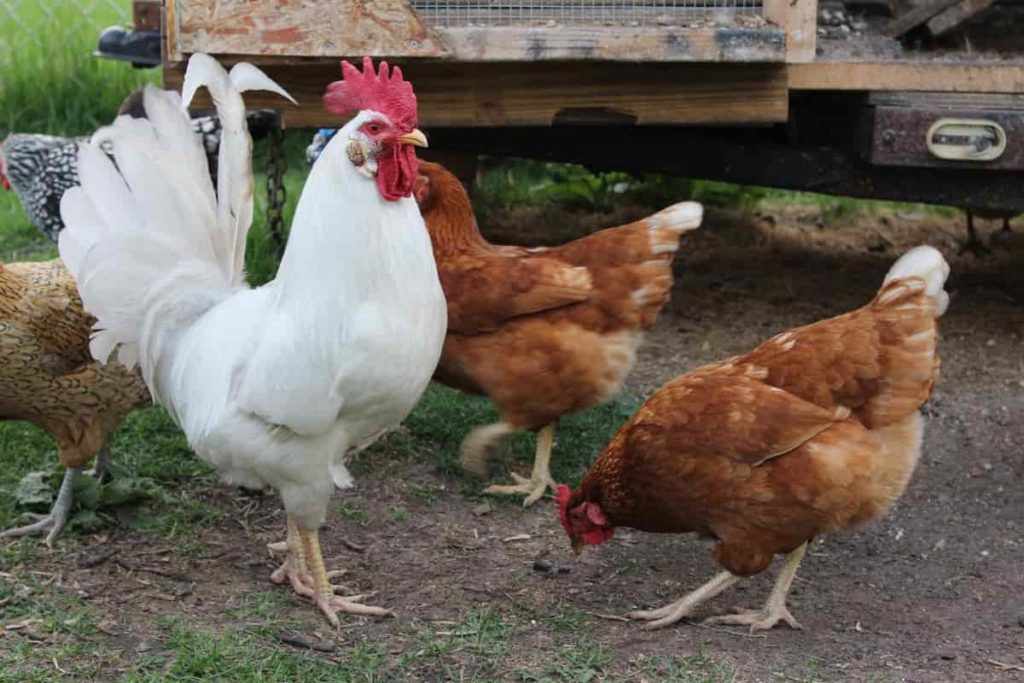
What does thrush look like in chickens?
Thrush, also called Candidiasis, is a disease of the food digestive tract of chickens, turkeys, and sometimes other birds and mammals, characterized by thickening and white plaques on the mucosa. Candidiasis is identified by the thick, bright-white mucus that coats the tongue, mouth, and esophagus. Oral mucus produces a fruit-like odor. Candidiasis can be treated with an antifungal powder prescribed by a veterinarian.
What causes chicken bumblefoot in chickens?
Bumblefoot is a bacterial infection that occurs by a cut or scrapes to the chicken’s foot and later becomes contaminated by different species of bacteria in the surrounding environment, including Staphylococcus aureus, E. coli, and Pseudomonas.
What is an Omphalitis?
It is a highly fatal infection of newly hatched chickens or turkeys marked by a soft, swollen abdomen and foul odors. It is caused by bacteria entering the body through the umbilical opening. The primary cause of this disease is the contact of an open navel with contaminated surfaces. If young poultry lives in contaminated environments before their navels are completely closed, bacteria can migrate to other chickens.
What causes pullorum disease in chickens?
Pullorum is a common disease, primarily seen in chickens and turkeys, caused by Gram-negative bacteria Salmonella Gallinarum and S. Pullorum. Clinical signs in baby chickens and poults include anorexia, diarrhoea, dehydration, weakness, and high mortality. Affected baby chickens huddle near the heat source and look weak, lacking appetites and stunted growth. Infected chickens will make peeping sounds. Infected baby chickens have chalky, white droppings. Signs of this disease may not show for the first five to ten days. Most deaths happen in the second or third week of life.
Conclusion
Because many of the most common diseases infecting chickens have very high mortality rates, it is important to take all preventive actions to keep them healthy. Affected chickens are checked for any signs of illness and kept isolated and quarantined from the rest of the flock to avoid spreading diseases. Keeping brooders and coops ventilated, and clean is essential, and be sure all birds have adequate space to prevent overcrowding.
- Management Pests and Diseases in Your Cotton Field
- Sheep Farming Business Plan for Beginners
- Aquaponic Farming at Home: A Step-By-Step Guide
- Profitable Village Farming Business Ideas in 2024
- High-Yield Aquaculture: Fast-Growing Fish for Farming
- Effective Fish Pond Construction Techniques for Beginners
- Irrigation and Water Management in Pineapple Farming
- Blossom to Harvest: Mastering Flowering and Pollination in Papaya Farming
- Pig Fattening Essentials: From Selection to Sale for Beginners
- Raising Wagyu Cattle: A Complete Guide for Premium Beef Production
- Soil Types and Their Water Holding Capacity
- Optimizing Irrigation Schedules for Coconut Groves for Enhanced Yield
- Espresso Your Garden: Coffee Grounds for Healthier Acid-Loving Plants
- The Best Soil Mix for Snake Plants: How to Mix Your Own Snake Plant Soil
- Green Thumb Success: Expert Tips for Cultivating Greenhouse Beans All Year Round
- Bloom All Year Round: The Ultimate Guide to Indoor Hyacinth Care
- Eco-Friendly Gardening: How to Make Liquid Fertilizer from Kitchen Waste
- Ultimate Guide to Grow Anise in Pots: Explore Seed Propagation to Harvesting
- Guide to Raising Chester White Pigs: Discover Breed Facts to Growth Management
- Mastering the Elegance: The Ultimate Guide to Weeping Cherry Tree Care, Planting, and Maintenance
- Ultimate Guide to Planting Garlic in Grow Bags: Growing Strategies for Beginners
- How to Fix Spider Plant Leaf-Related Problems: Natural and Organic Remedies
- 10 Reasons Why Your Tulsi Plant is Shedding Leaves: Home Remedies and Solutions
- Optimizing Growth and Yield: The Advantages of Palm Bunch Ash Fertilizer
- Utilizing Neem Oil Extract as a Natural Pesticide for Hydrangea
- From Soil to Harvest: Various Ways in Which Farmers Can Use AI Tools
- Steps to Encourage and Induce Citrus Flowers: A Comprehensive Guide
- How to Fix Snake Plant Leaf-Related Issues: Natural and Organic Remedies
- Transform Your Garden into a Fragrant Oasis with Raat Ki Rani (Night Blooming Jasmine)
- Discover the Ideal Chicken Breeds for Philippine Farms
- How to Create a Poultry Egg Farm Business Plan for Profits
- Grow Lemon Cucumbers Like a Pro: Insider Techniques for Bountiful Yields
- Ultimate Guide to Caring for Your Pink Princess Philodendron: Tips for Thriving Variegation
- Areca Nut Profit Per Acre: Calculating Yield and Cost of Cultivation
- How Kaveri Chicken is Becoming a More Profitable Breed in Indian Backyards
- Transform Your Barn: 9 Steps to Convert a Horse Stall into a Chicken Coop
